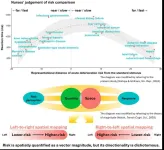(Press-News.org) It’s a little pill with big responsibilities. But despite its primary role to prevent pregnancy, the contraceptive pill (or ‘the Pill’) could also help reduce the risk of ovarian cancer, according to new research from the University of South Australia.
Screening for risk factors of ovarian cancer using artificial intelligence, UniSA researchers found that the oral contraceptive pill reduced the risk of ovarian cancer by 26% among women who had ever used the Pill, and by 43% for women who had used the Pill after the age of 45.
The study also identified some biomarkers associated with ovarian cancer risk, including several characteristics of red blood cells and certain liver enzymes in the blood, with lower body weight and shorter stature associating with a lower risk of ovarian cancer.
Researchers also found that women who had given birth to two or more children had a 39% reduced risk of developing ovarian cancer compared to those who had not had children.
Ahead of World Cancer Day on 4 February, the findings have potential to support early diagnosis of ovarian cancer.
In Australia, ovarian cancer is the tenth most common cancer in women and the sixth most common cause of death from cancer in women.
In 2023, 1786 females were diagnosed with ovarian cancer in Australia; the same year, 1050 females died of the disease.
UniSA researcher Dr Amanda Lumsden says understanding risks and preventative factors for ovarian cancer is key for improved treatment and outcomes.
“Ovarian cancer is notoriously diagnosed at a late stage, with about 70% of cases only identified when they are significantly advanced,” Dr Lumsden says.
“Late detection contributes to a survival rate of less than 30% over five years, in comparison to more than 90% for ovarian cancers that are caught early. That’s why it’s so important to identify risk factors.
“In this research, we found that women who had used the oral contraceptive pill had a lower risk of ovarian cancer. And those who had last used the Pill in their mid-40s, had an even lower level of risk.
“This poses the question as to whether interventions that reduce the number of ovulations could be used as a potential target for prevention strategies for ovarian cancer.”
Supported by the MRFF, the study used artificial intelligence to assess the data of 221,732 females (aged 37-73 at baseline) in the UK Biobank.
Machine learning specialist, UniSA’s Dr Iqbal Madakkatel, says the study shows how artificial intelligence can help to identify risk factors that may otherwise have gone undetected.
“We included information from almost 3000 diverse characteristics related to health, medication use, diet and lifestyle, physical measures, metabolic, and hormonal factors, each measured at the start of the study,” Dr Madakkatel says.
“It was particularly interesting that some blood measures – which were measured on average 12.6 years before diagnoses – were predictive of ovarian cancer risk, because it suggests we may be able to develop tests to identify women at risk at a very early stage.”
Project Lead, Professor Elina Hyppönen, says that identifying risk factors for ovarian cancer could help to improve survival rates through prevention and earlier detection.
“It is exciting that our data-driven analyses have uncovered key risk factors for ovarian cancer that can be acted upon,” Prof Hyppönen says.
“It is possible that by using the contraceptive pill to reduce ovulations or by reducing harmful adiposity, we may be able to lower to risk of ovarian cancer. But more research is needed to establish the best approaches to prevention, as well as the ways in which we can identify women most at risk.”
…………………………………………………………………………………………………………………………
Contacts for interview: Dr Amanda Lumsden E: Amanda.Lumsden@unisa.edu.au
Professor Elina Hyppönen: E: Elina.Hypponen@unisa.edu.au
Media contact: Annabel Mansfield M: +61 479 182 489 E: Annabel.Mansfield@unisa.edu.au
END
Could the contraceptive pill reduce risk of ovarian cancer?
2025-02-02
ELSE PRESS RELEASES FROM THIS DATE:
Launch of the most comprehensive, and up to date European Wetland Map
2025-02-02
2nd February 2025 Greifswald/Aarhus/Helsinki - On time for World Wetlands Day, the European Wetland Map (‘EWM’) significantly enhances knowledge of wetlands across Europe by locating, assessing and merging the latest geospatial data. It combines various geographic information system (GIS) data on wetland types and their distribution on mineral soil in coastal environments, floodplains, and a large variety of peatlands in one most comprehensive, easily accessible resource.
"Over a period of two years, we collected, checked and merged more than 200 geodata on wetlands and especially ...
Lurie Children’s campaign urges parents to follow up right away if newborn screening results are abnormal
2025-02-01
Ann & Robert H. Lurie Children’s Hospital of Chicago launched a newborn screening awareness campaign, with signage on public transit and billboards across Chicago urging parents to contact their child’s pediatrician immediately if results are out of normal range. For some conditions, such as cystic fibrosis, that are included in newborn screening, timely diagnosis and early treatment are key to optimal health, while delays can lead to more severe disease.
All U.S. states screen for at least 33 metabolic and ...
Does drinking alcohol really take away the blues? It's not what you think
2025-02-01
A new study from the University of Chicago Medicine reveals that people with alcohol use disorder (AUD) and depression experience high levels of stimulation and pleasure when intoxicated, similar to drinkers who do not have depression.
The findings counter the long-held belief that the pleasure people experience when drinking alcohol decreases with addiction and that drinking to intoxication is mainly to reduce negative feelings as a form of self-medication.
"We have this folklore that people drink excessively when they're feeling depressed ...
Speed of risk perception is connected to how information is arranged
2025-02-01
Tokyo, Japan – Researchers from Tokyo Metropolitan University have studied how nurses perceive words showing high and low risk ailments. They looked for directional bias, e.g. whether words denoting lower (higher) risk led to a quicker response when placed on the left (right) side or vice versa. They found faster response for significantly higher or lower risk, but different people had different directional biases. Their findings might inform better ways to present clinical information.
With every incoming medical emergency, nurses are required ...
High-risk pregnancy specialists analyze AI system to detect heart defects on fetal ultrasound exams
2025-02-01
High-risk pregnancy specialists from the Raquel and Jaime Gilinski Department of Obstetrics, Gynecology and Reproductive Science at the Icahn School of Medicine at Mount Sinai are presenting research at the Annual Pregnancy Meeting of the Society for Maternal-Fetal Medicine (SMFM) in Denver from January 27- February 1.
The Mount Sinai doctors are available for interview about their research findings, and can also provide commentary on other women’s health topics, breaking news, and studies.
PRESENTATIONS and POSTER SESSIONS
*All abstracts are under embargo until the below listed times*
Thursday, ...
‘Altar tent’ discovery puts Islamic art at the heart of medieval Christianity
2025-02-01
University of Cambridge media release
‘Altar tent’ discovery puts Islamic art at the heart of medieval Christianity
UNDER STRICT EMBARGO UNTIL 00:01AM (UK TIME) ON SATURDAY 1ST FEBRUARY 2025
A 13th-century fresco rediscovered in Ferrara, Italy, provides unique evidence of medieval churches using Islamic tents to conceal their high altars. The 700-year-old fresco is thought to be the only surviving image of its kind, offering precious evidence of a little-known Christian practice.
The partially-visible fresco, identified by Cambridge University historian Dr Federica Gigante, almost certainly depicts a real tent, ...
Policy briefs present approach for understanding prison violence
2025-01-31
Prison violence remains a significant yet underreported issue in the U.S. criminal justice system, leading to unsafe conditions for both incarcerated persons and staff. To address this pressing problem, a team of researchers has conducted a study aimed at understanding prison violence to develop strategies for reducing and preventing it in correctional facilities nationwide.
The researchers present their work in two recently released policy briefs — “The Dark Figure of Prison Violence: A Multi-Strategy Approach to Uncovering the Prevalence of Prison Violence” and “Sources and Consequences ...
Early adult mortality is higher than expected in US post-COVID
2025-01-31
New research from the University of Minnesota and Boston University School of Public Health (BUSPH) shows that death rates for early adults, or adults aged 25-44, rose sharply during the COVID-19 pandemic and remain higher than expected post-pandemic.
Heightened death rates during the COVID-19 pandemic intensified an already negative trend for early adults, which began around 2010. As a result, early adult death rates in 2023 were about 70 percent higher than they might have been if death rates had not begun to rise about a decade before the pandemic.
The researchers analyzed death rates between 1999-2023. Published in JAMA ...
Recycling lithium-ion batteries cuts emissions and strengthens supply chain
2025-01-31
Recycling lithium-ion batteries to recover their critical metals has significantly lower environmental impacts than mining virgin metals, according to a new Stanford University lifecycle analysis published in Nature Communications. On a large scale, recycling could also help relieve the long-term supply insecurity – physically and geopolitically – of critical battery minerals.
Lithium-ion battery recyclers source materials from two main streams: defective scrap material from battery manufacturers, and so-called “dead” batteries, mostly ...
Study offers new hope for relieving chronic pain in dialysis patients
2025-01-31
People undergoing hemodialysis treatment for kidney failure often experience chronic pain related to their condition, but it can be difficult to manage with opioid medication and other conventional treatments.
A new study published in JAMA Internal Medicine finds that offering these patients pain coping skills training (PCST) significantly reduced their suffering and improved their quality of life.
“This is particularly important for these patients, since the therapeutic choices for pain management are limited and the use of opioids has been shown ...



